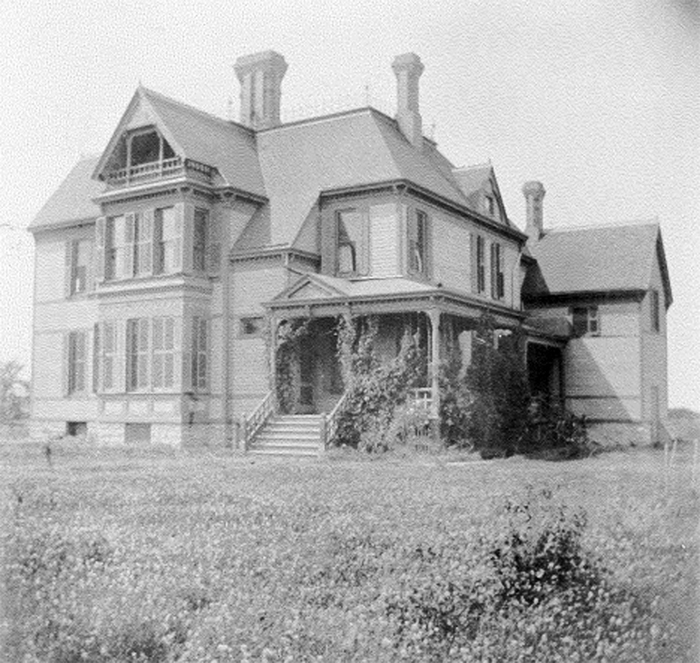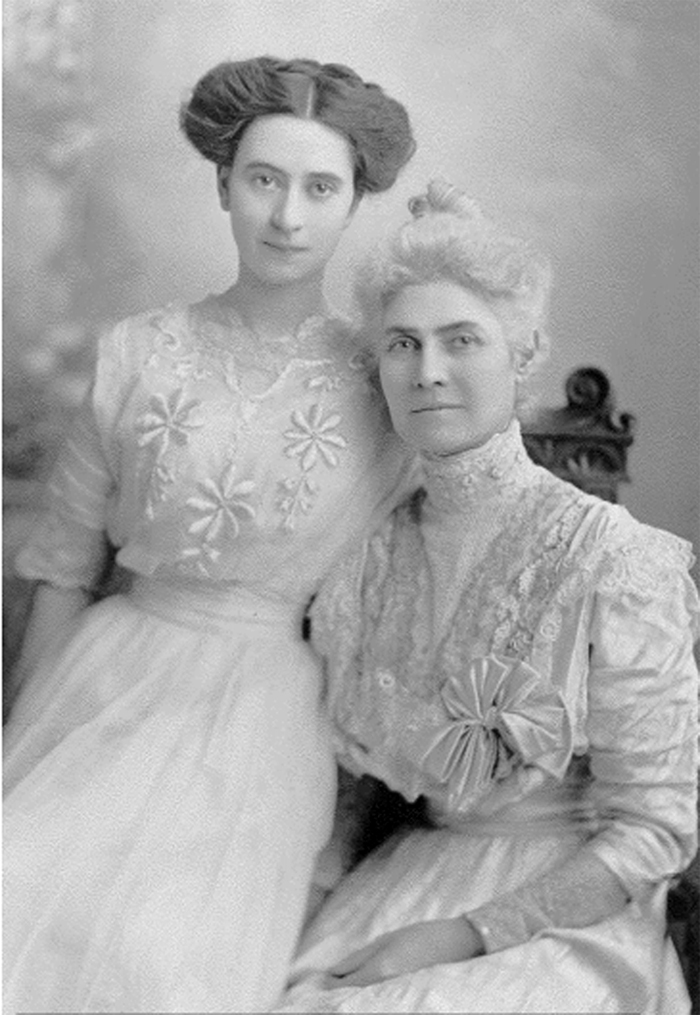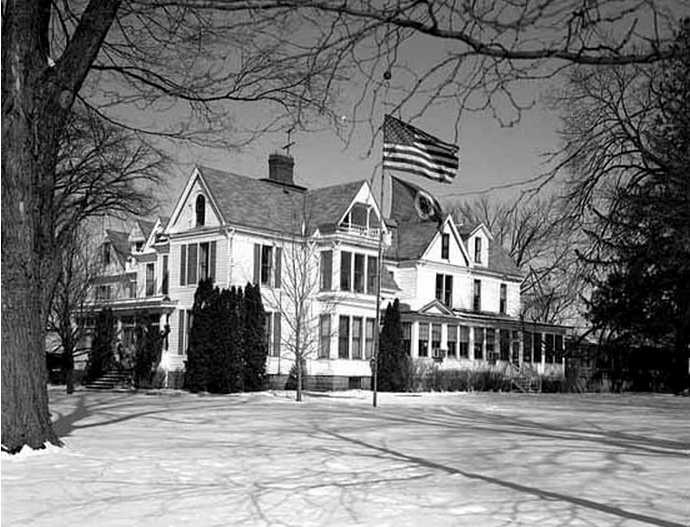Who the Heck Was Laura Baker?
You may not recognize the name Laura Baker unless you have been by the school named after her in Northfield. But the school isn’t just named after Baker, it’s named for her. She established a small, private school for a handful of developmentally disabled students in Minneapolis in 1897 that eventually grew to a five-acre campus in Fairbault.
Laura Belle Baker was born in Chariton, Iowa on April 10, 1859. Her parents were liberal and civic-minded farmers who stressed the importance of education, tolerance, and empathy to their children. Shortly after graduating from grammar school, Baker began teaching. She would spend the next eighty-three years successfully educating boys and girls that society often feared.
After receiving her teaching degree in 1877, Baker began her first job at the newly expanded Glenwood Asylum for Feeble Minded Children in Mills County, Iowa. The facility housed and educated developmentally disabled children in southwestern Iowa. The Glenwood Asylum was only the seventh such institution in the United States at the time; the first located west of the Mississippi. Baker served as one of the two principal teachers there for seven years.


In 1884, Baker traveled by wagon to Minnesota where she had been offered the position of principal at the Faribault State School. She thrived as a teacher and administrator at the school for more than 12 years. During her time at Fairbault, her success was overshadowed by her distress at the custodial approach to housing and educating developmentally disabled boys and girls. She firmly believed these children could achieve richer, fuller lives through education and training in an environment that better suited their unique needs. From this, a greater awareness and community acceptance of developmentally disabled individuals would follow. Although Baker enjoyed her time teaching at Fairbault, she realized that the changes that needed to be made would not happen quickly in a state-run facility.
Bolstered by the support of several parents who sought a better education and greater opportunities for their children than the Faribault State School was providing, Baker took a leave of absence in 1897. She rallied the financial support to establish a small, private school for a handful of developmentally disabled students in Minneapolis that same year. Baker rented a large house on Chicago Avenue to use as a home and school for herself and her students. Her objective for the school was to give the children a rich, full life despite their disability. She planned to accomplish it through education, training, and community acceptance.
Once the word of Baker’s success in Minneapolis spread, the school quickly grew out of its home on Chicago Avenue. Baker began looking for a property that could serve as a home and school for her ten students. Rather than isolating the school by choosing a property outside of town, Baker sought a home near the center of a small, but active, town. She settled on a two-and-a-half story home and accompanying five acres in Northfield.
The Laura Baker School opened in September of 1898. Baker lived alongside her students, housekeepers, housemothers, and teachers for the first 19 years. She wanted her students to live and learn in a large family environment. The school’s curriculum included Montessori kindergarten and elementary through eighth-grade classes. Additional training in speech and language therapy and industrial art classes such as torchon lace weaving, sewing, embroidery, knitting, crocheting, basketry, rug weaving, and hammock making were also offered.
In order to bring the community and her students together socially, the school often hosted parties and events with costumes, entertainment, and refreshments. The school offered students lessons in dance and music theory which helped them navigate social situations typical for children their age. The community was also invited to see musical recitals and performances at the school. She encouraged people from the neighborhood to socialize with her students and treat them the same as they would any other children in the neighborhood. This interaction also helped the children form stable perceptions of the world around them.
In the 1910s, scientists and educators began pushing their beliefs that developmentally disabled individuals would maintain a low level of intelligence throughout their lives and that they often participated in criminal activity as adults. They propagated the idea that such people should be feared because they were unable to understand the difference between right and wrong. Doctor Charles Davenport even published articles in several medical journals stating that the developmentally disabled were an inferior species that must be bred out of existence. Through it all, Baker steadfastly believed that her students would grow into productive members of society by providing them with a safe, stable learning environment. She often encouraged the community to challenge their preconceptions about the children in her care. She refused to subscribe to the idea that her students couldn’t learn the difference between right and wrong like other children or that they would never be able to live independently as adults.


As many state-run schools for the developmentally disabled were being characterized by overcrowding and neglect, Baker’s school was being recognized for its reputation for excellence. Students in state schools, such as Fairbault, were sleeping 10 to 20 in a room and lacked common areas and living spaces. They were sheltered away from society and often quarantined to the grounds of the school. Meanwhile, the Laura Baker School grew to 35 students. Baker began making room for the additional children by adding an addition to the main building. The addition housed a large kitchen, dining room, and residential facilities for staff. The southern wing of the building was devoted to a large assembly room and more residential facilities on the second floor for staff.
In 1929, Baker sold an acre of land to raise funds to build a new dormitory for students. Margaret Graves Hall was connected to the main building by a one-story brick concourse. The dormitory had individual bedrooms for the children that were light and airy. Each bedroom had a bathroom that was shared between two rooms. A large living room area was located on the main floor of the building. Baker stressed the importance of maintaining a nurturing environment where the children were treated with respect.
Baker provided her students with a large family atmosphere and plenty of recreational activities outside of school. Students and staff dined together in the school’s large dining room every day, students always had an individual birthday party with cake, ice cream, and a sing-a-long each year, and summers were always spent at the lake. Each June,children and staff would move into several cottages that Baker had purchased on Roberds Lake in Faribault. There, students and staff spent eight weeks swimming, fishing, boating, playing games and other summer activities. Baker’s kindness didn’t go unrecognized by the parents of her students. In a letter, one parent wrote to Baker, “Since happiness comes from making others happy you should be the happiest person in the world. You stand ahead of anyone I have ever known for example of doing for others”.
At the age of 81, Baker transferred primary operation of the school to her niece, Laura Baker Millis and her husband, Henry Millis. Baker was still actively involved with the students and staff at the school until her death in 1960 at the age of 101. Baker devoted 83 years—62 of those at the school she started—to the care and betterment of the developmentally disabled. She was a pioneer in nonrestrictive educational programs for these students and challenged people’s misconceptions about the developmentally disabled.
Today, the Laura Baker Services Association carries on the work of their founder. The Laura Baker School continues to educate students with developmental disabilities from age five to 22 in a private school setting. Additionally, the LBSA now offers music therapy, a residential center, and services for adults with developmental disabilities.
The Laura Baker School complex was listed on the National Register of Historic Places in 1978. Since then, most of the original buildings have been razed. The last historic building was recently demolished and the property is in the process of being delisted from the National Register of Historic Places.
All photos courtesy of the Laura Baker Services Association
